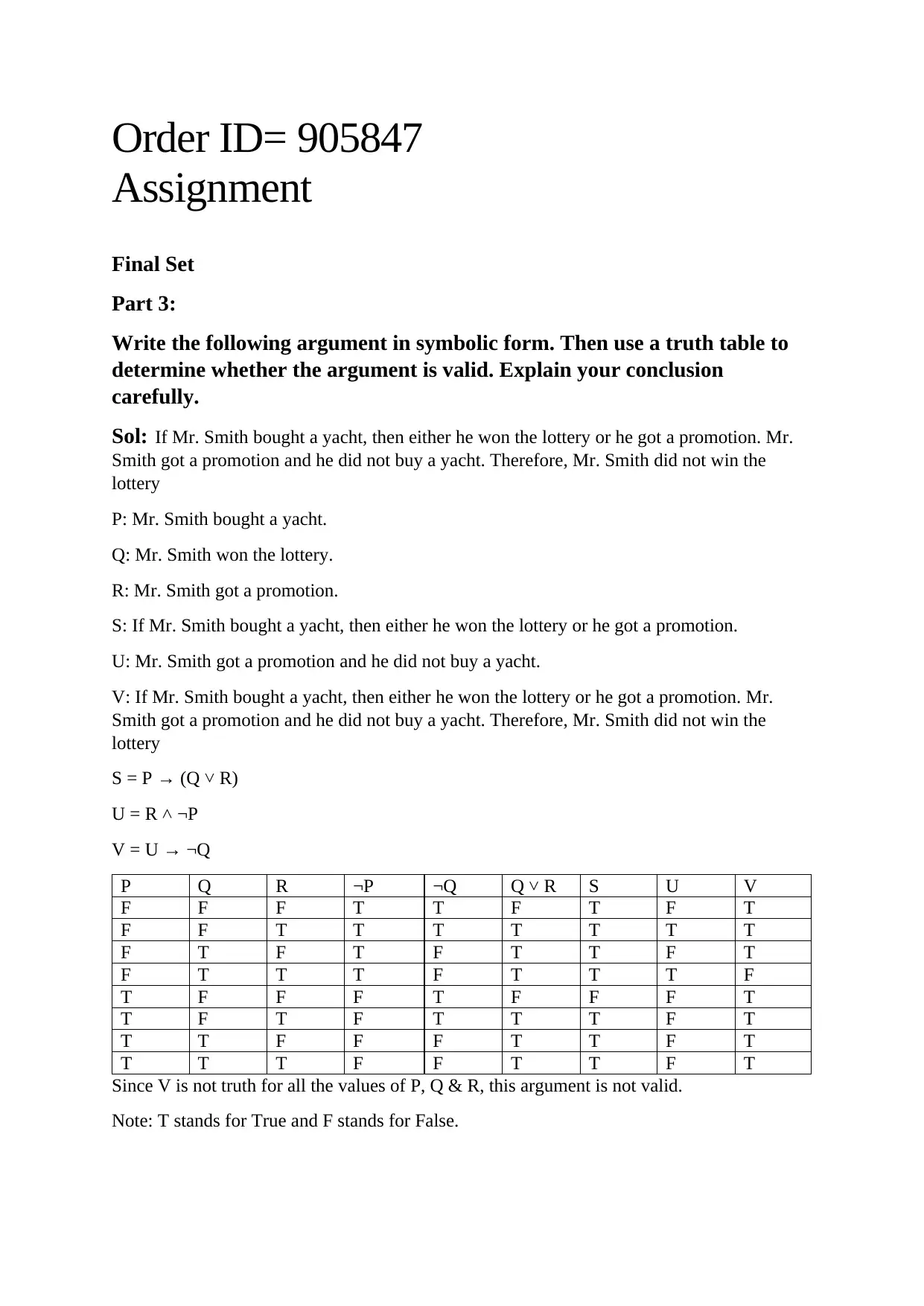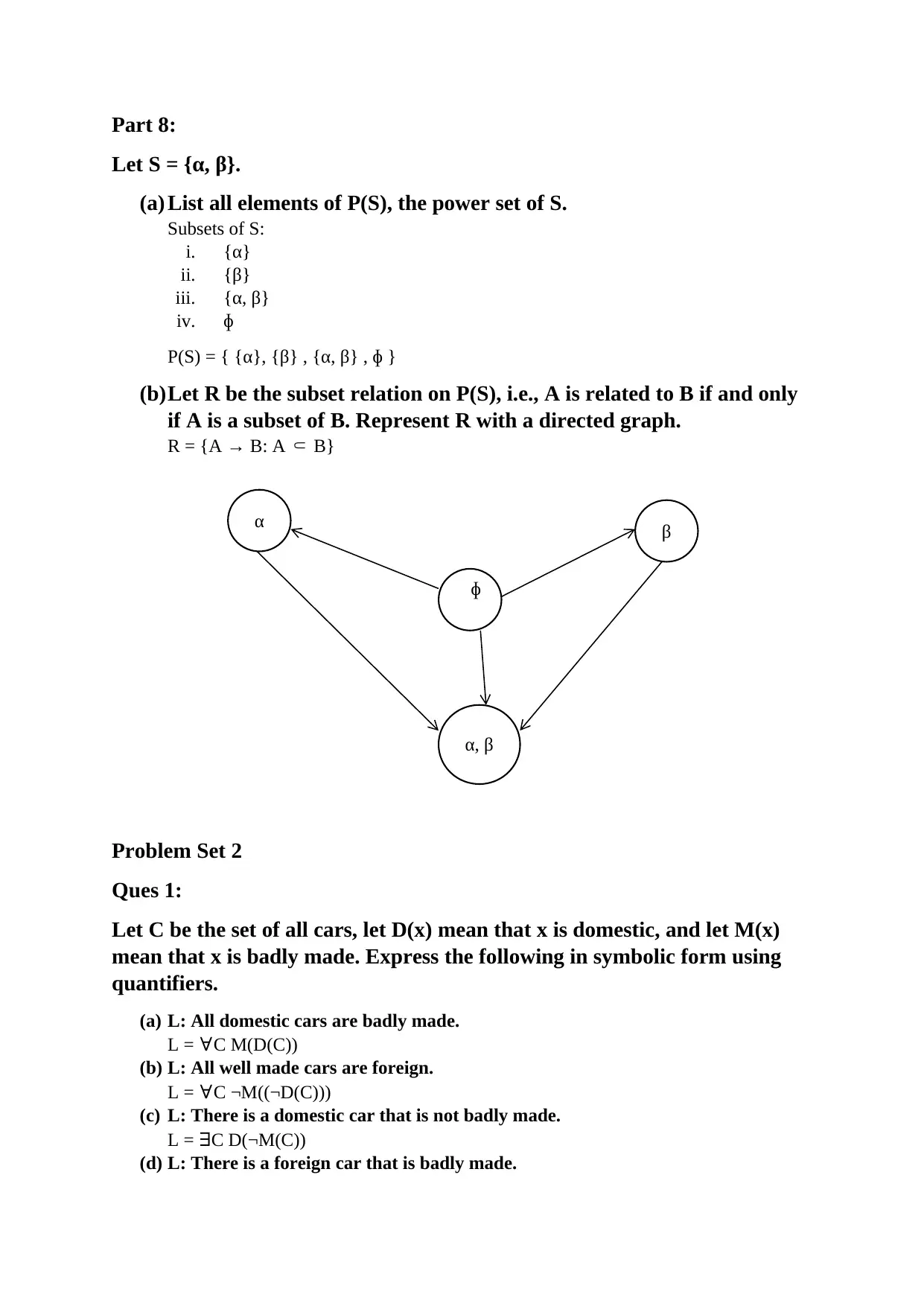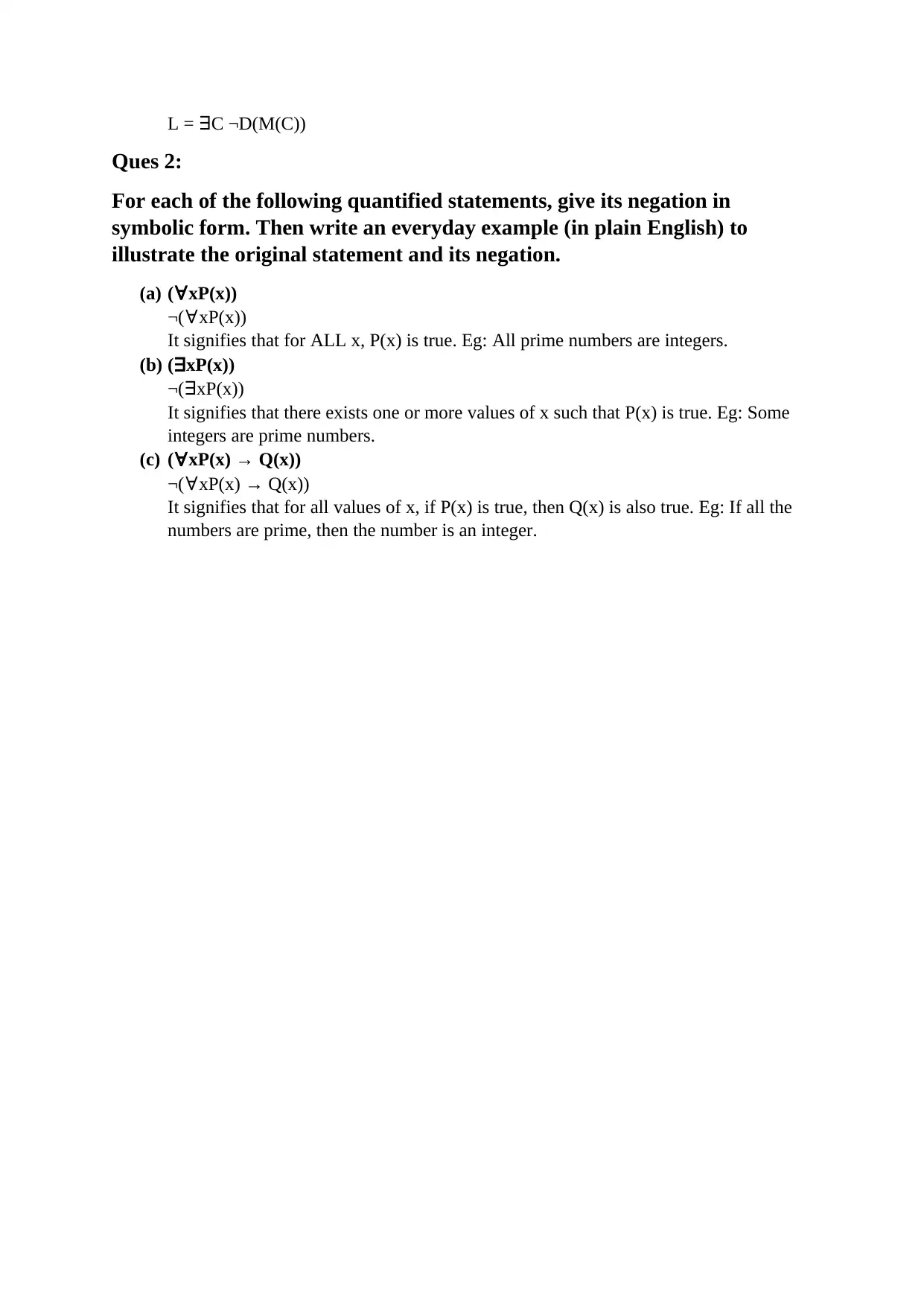MATH165: Discrete Mathematics I - Problem Set Solutions, Fall 2018
VerifiedAdded on 2023/04/25
|3
|779
|423
Homework Assignment
AI Summary
This document contains solutions to several problem sets from a Discrete Mathematics I course (MATH165) offered in Fall 2018. The solutions cover a range of topics, including mathematical induction, proofs of irrationality, set theory operations (union, intersection, difference, etc.), and the representation of sets using set-builder and roster notation. It also includes solutions for problems involving quantifiers, negations, and symbolic logic. Several proofs are provided, including proofs by contradiction and proofs using truth tables. The document also includes solutions for problems related to DeMorgan's Laws, and the validity of arguments. The solutions are presented in a clear and concise manner, with detailed explanations and justifications for each step, making it a valuable resource for students studying discrete mathematics.
1 out of 3










![[object Object]](/_next/static/media/star-bottom.7253800d.svg)